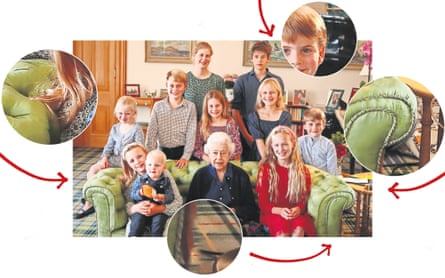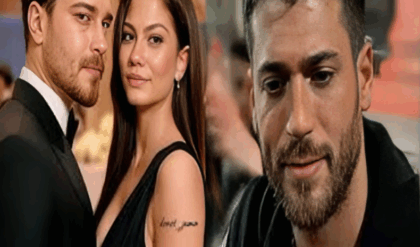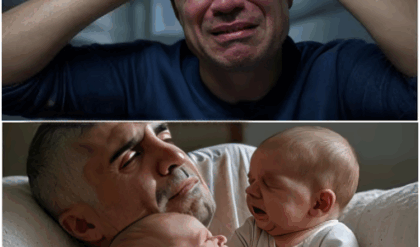What appeared to be a harmless-looking snap has turned out to be anything but. Though previous official images of the royals have been altered, this one could change their relationship with the media for ever
On Thursday the doors of Kensington Palace swung open to welcome an eager public. Its new exhibition, Untold Lives, offers to shine a light for the first time on all the staff who have worked behind the scenes over the centuries, those stage managers who ensure the smooth running of “the business they call showbusiness” … in other words, the monarchy.
It was sweetly ironic timing as much of the wider world remained agog, guessing at exactly what was going on inside the walls of that very palace. Ill-informed speculation on social media and lurid reports in the foreign press were running riot. Avid royal watchers wondered if the Princess of Wales, still scheduled to be out of action after an operation, was seriously ill, or perhaps even about to quit her role.
The trigger, of course, was the release last weekend of a harmless-looking Mother’s Day photograph. At this point it almost doesn’t matter whether the rather clumsy edits that the princess, the official patron of the Royal Photographic Society since 2019, has now suggested she herself made to the image were an innocent act, born of habit, or something more deliberate. They have already sown seeds of mayhem that will have an impact on the public relations industry for some time.
“There is definitely going to be heightened awareness of the risks of editing,” said Jonathan Suart, a partner at reputational consultants Hanbury Strategy. “There’s going to be far greater scrutiny of politicians and celebrities. We’ve known a photo opportunity can go wrong for a couple of decades at least, and that you are never going to please all the people, but the more you can control the way an image lands, the better.”
So it seems a couple of clicks and cursor swipes have been enough to throw an already jittery, untrusting nation into a fresh zone of uncertainty. Headlines across the US and Europe have screamed outlandish claims, while online pundits have tried to establish the facts. So far they are that a family snap, allegedly taken by the Prince of Wales at Adelaide Cottage and showing his three children grouped happily around their mother, shows definite signs of manipulation and that there is no wedding ring visible on the hand of his wife.
While the British press have maintained some decorum, with even the red-top newspapers counselling restraint, the wider realms of social media have been analysing the meaning of the photograph with a grim kind of glee. And the story is now more than fodder for followers of the Windsor soap opera. It has damaged the royal brand by letting us “subjects” glimpse the artifice needed to keep the show on the road. It has also allowed Britain’s international enemies and its allies to suggest our standards are slipping.
“Trust is notoriously tricky to rebuild,” notes James Robinson, founder of communications experts, Woburn Partners: “You would normally recommend transparency after such a mis-step, but when it’s a question of health, the princess should not have to disclose. She is not the head of state, after all. We’ll know more when she’s back doing official duties, but without a doubt she is the royal family’s greatest asset. She is a sympathetic character, a working mother, albeit with an unusual amount of privilege. Maybe she should take comfort from that. It also gives her power, of course.”
The Mother’s Day incident must be alarming the relatively new team working for the couple. Prince William has recently appointed Sean Carney in the newly created role of chief executive, while Kate has just finally installed Lieutenant Colonel Tom White as private secretary, after a long gap without one. But perhaps the strangest element of the whole furore is not what the Princess of Wales or her staff at Kensington Palace did, it is the way the outside world has changed. Candid royal snaps issued directly to the press as “handouts” were once a token of authenticity. “In the past it was a way to guarantee a front page picture and present a genuine image of a strong family,” said Suart.

Prince Louis, on the far right, has been moved back. His shirt stripes are repeated under the front of the arm of the settee, the cabling on the carpet disappears oddly, and his highly lit head has a sharp, cut-out edge. On the left, the curls of the hair of Mia Tindall are repeated exactly on the upholstery, draping as she leans around the head of her baby brother, Lucas.
The Observer’s picture desk can show this weekend that rough-edges of the editing process were nothing new. The photograph taken by Catherine at Balmoral and released last year to mark what would have been the 97th birthday of the late Queen bears similar signs of digital alteration. Prince Louis appears to have been moved back into the frame, while locks of a great granddaughter’s hair show telltale repetitions. Back then, though, the image was not urgently “killed” by the leading international photo agencies, like the latest one, because it didn’t matter so much.
But 2024 is a different place. With crucial elections taking place around the globe, including the UK and US, the question of what is safe to believe in has never been so pertinent. The public are aware of the perils of “deep fakes” as well as photo editing. Mobile phones, let alone good cameras, can take an instantaneous burst of frames and select the best bits of each shot before merging them convincingly into one image. These tricks are now widely understood.
There are also hordes of armchair analysts out there making technical judgments. How could the news agencies possibly protect their reputations if they did not respond last week to mounting amateur claims that the image was not trustworthy? “I don’t know if the likes of Reuters and Associated Press would have issued ‘kill notices’ if there had not been pressure from online analysis of the image,” said Suart. “They have to look after their brands as providers of reliable information. That is their business model. People question everything now, from the time stamps on the image, to the trees in the background.”
Of course, the really big change in the media landscape was the sustained absence of the Princess of Wales. Although it has been repeatedly, and unusually, officially explained away as a period of planned recuperation, the suspicion there is some dire secret factor has spread fast, as disconcerting rumours often do.
“The first issue is always to understand the environment you are operating in. With all these conspiracy theories going on, nothing they put out there was going to escape close analysis, if not from professionals, then certainly from amateurs,” said Suart.

The cover of the Evening Standard last week depicting the Princess of Wales’s ‘sadness’ over the affair. Photograph: Hollie Adams/Reuters
What emerges is the newly enhanced value of “authenticity”, in a context where holograms, social media bots and cloned voices are the latest demons threatening to loosen our collective grip on reality. Trust in our institutions, whether the police, the church, charities or the royal family, is already being regularly undermined, but now so is our ability to be convinced once the truth does come out.
‘The trouble with all these losses of trust is that they are the result of different problems and some are extremely well founded,” said Robinson. “Sadly, everyone gets tarred. The best thing is often not to say anything at all, but it’s hard advice to give. You need to know what else might come out. We often work closely with lawyers who advise clients not to apologise, in case they leave themselves open legally. But I would urge people to take a longer view. It’s often more important to maintain your reputation and to take that short-term, lower risk of paying out legal fees or compensation.”
Suart believes the backlash to the royal snap demonstrates the worth of developing a good reputation before a crisis. “The Princess of Wales is already benefiting from that because the Sun headline called on conspiracy theorists to ‘lay off’ Kate and an opinion piece in the Express urged readers to move on.”
Yet the implication that newspaper editors might be colluding with the royal family is dangerous, Robinson acknowledges, whether true or not: “It is hard to judge. I think they are not, but there’s a problem anyway if people don’t believe that. It’s worrying if there is wide disparity between what people are reading and what they suspect.”
According to Robinson, in the political arena the upshot will be that every spin doctor will try to stop all doctoring of promotional images. “They’ll be accused of fakery even if they just do the most harmless bit of bringing someone closer to Keir Starmer. Authenticity is now the most valuable commodity there is.”
So whether or not those edits made after the original Mother’s Day photograph was saved on a Canon 5D Mark IV that Friday evening were designed to hide more than an ugly shadow or a silly grimace – in other words, if it actually was a way to send a secret message – it was certainly a move that is rippling out to create fresh waves of public doubt.



 , eşi Burak onu hemen hastaneye götürdü
, eşi Burak onu hemen hastaneye götürdü 
 .
.



